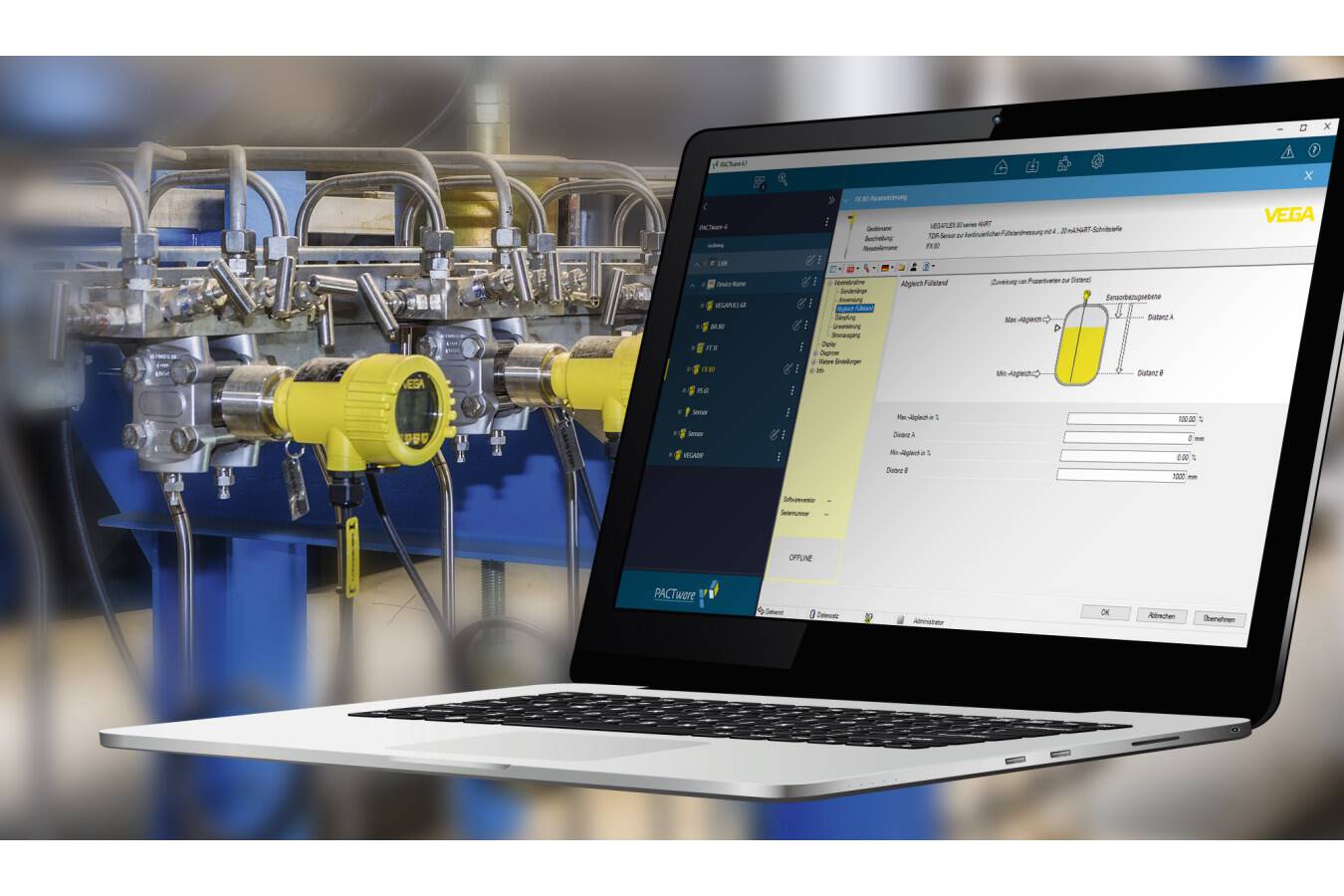VEGAPULS 6X: High precision despite high temperatures
The VEGAPULS 6X radar sensor in the new high-temperature version offers a solution for processes with temperatures of up to 450 °C.
There are applications that push level measurement to its limits. Until recently, this included a process called iron briquetting, where it was almost impossible to achieve reliable measuring results due to extreme temperatures. That has changed. Now, the new high-temperature version of radar sensor VEGAPULS 6X provides a groundbreaking solution for processes at temperatures up to 450 °C.
Sponge iron is an intermediate product in steel production. To store or transport it economically, it is often processed into briquettes. The technique involves passing the porous, spongy mass through heat-resistant roller presses at temperatures of 400 °C and higher.
New solution for an old problem
For many years, precise level measurement was the bottleneck in this process. Conventional measurement technology was not able to function reliably under the harsh conditions, because in addition to the heat, the low conductivity of iron also proved to be an impediment.
For challenging applications such as these, VEGA now offers the high-temperature version of its VEGAPULS 6X radar sensor. Thanks to its hollow ceramic cone and graphite seal, the sensor achieves a thermal performance that was previously not possible. “It’s true that hot briquetting is a niche process,” admits product manager Marvin Moser. However, there are countless such extremes and special cases for which reliable measurement technology is all the more important. “Failure is not an option here,” he says, convinced that “if VEGAPULS 6X can handle this, then it is suitable for all such extreme cases.”
New performance class
In order to achieve significantly better performance under extremely high temperatures, VEGA protects its radar sensors with a new type of sensor design.
The combination of hollow ceramic cone and graphite seal creates additional measurement certainty. By minimising the mass to be penetrated in the hollow cone, the performance of the sensor is significantly enhanced. The use of graphite as a sealing material also contributes greatly to the robustness of the sensor. As a result, it has a temperature resistance range from -196 °C to +450 °C and a pressure resistance range from -1 bar to +160 bar. Even large temperature fluctuations are not a problem.
Made to fit
Besides being highly resistant, VEGAPULS 6X offers another major advantage that is particularly useful for compact vessels. It can be used with a wide range of available process fittings, compact threads and small flanges, and operates without a blocking distance i.e. dead band. Process vessels can thus be filled right up to the top edge with no problem. Its high frequency of 80 GHz also enables particularly good focussing of its measuring beam, which in turn has a positive effect on measurement in tanks with internal installations and agitators. What is more, its high dynamic range makes it possible to reliably measure media that were previously considered nearly impossible to measure due to their low dielectric constant.
Are they completely secure?
Maximum system security is one of the most important goals in the process industry. To achieve this, VEGA has implemented a comprehensive security concept with the VEGAPULS 6X level sensor. At the top of the list is the sensor design itself, which easily withstands extreme ambient conditions. In addition, the sensor covers security and safety issues such as cybersecurity, functional safety in accordance with the Machinery Directive and explosion protection, all the while complying with the highest international standards and current directives. “With the new version of VEGAPULS 6X, we’ve achieved another milestone in safety technology,” says Marvin Moser with conviction.


